During the fall of 2015, I designed and taught an advanced composition course with inspiration from syllabi of Vanessa Kramer Sohan and Malea Powell. Because my dissertation research centers around the text(ile) work of a quilt project—one that advocates awareness of migrant lives lost along the US/Mexico border through quilts—I wanted to create a course that asked students to work through some key questions concerning writing about, engaging with, analyzing, and making material things. With my research interests in mind, I created a course that asked students to “compose” a material object[1] while considering the rhetorical value of material things. I wanted students to experience the composing of things alongside composing written texts to compare their processes and be critical of their processes.
The course is an upper division undergraduate English course that fulfills an advanced English required for some majors, so our class had mostly juniors and seniors from various majors. I explained at the beginning of the course that we would focus on material culture and that we would have a maker project. One student began with a wonderful question: “Can I do well in this class even if I’m not creative?” I emphasized that we would focus on the making process and reflecting on the process more than the end product, which is also important for writing. I hoped students would explore and challenge assumptions that they must be “creative” to make things.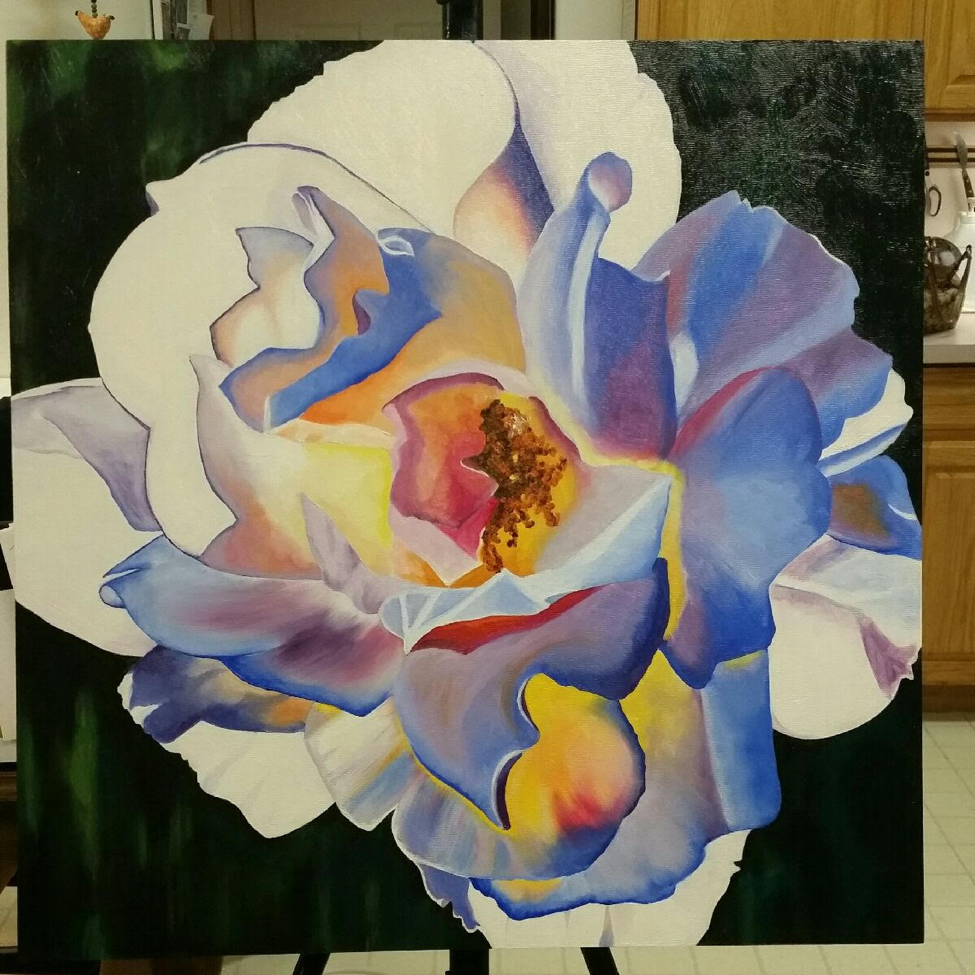 I divided the course into three units with a different scholarly focus for each: rhetorical theory, material culture and cultural studies. The course consisted of three major assignments (rhetorical analysis, maker project, reflection) as well as two smaller ones (trace papers[2]) and maker days. For this particular piece, I will focus on maker days, the maker project, and the final reflection.
I divided the course into three units with a different scholarly focus for each: rhetorical theory, material culture and cultural studies. The course consisted of three major assignments (rhetorical analysis, maker project, reflection) as well as two smaller ones (trace papers[2]) and maker days. For this particular piece, I will focus on maker days, the maker project, and the final reflection.
We had five maker days during the semester. For the first two maker days students worked in class either with their own materials or with materials I brought for them: origami, mandala coloring, knitting, crocheting, and zine materials. Some students brought their own projects and others didn’t even know where to begin. Some tried knitting for the first time watching a youtube video; some worked on a mandala with their headphones on; some formed origami groups comparing end products and sharing tips as they practiced each animal or flower. At first, they didn’t really know what to make of maker days. They thought this was such a cool class because they didn’t have to “do” anything English on maker days. However, as the semester progressed, they worked on their own maker projects on maker days, and they expressed that their minds were busy contemplating the scholarship we read and discussed. As they applied (or at least considered) some theory to the practice of making it suddenly was a more critical practice. They thought more carefully about their rhetorical choices knowing they would have to explain those choices in the end. Most importantly for them, a grade was attached to the making of this thing.
For the maker project, students had to “make a thing” which included a presentation and a reflection about the making of that thing. The reflection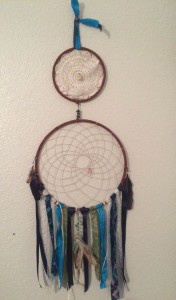 asked students to integrate scholarship from the course that influenced their making. Students chose an incredible array of projects, and they critically engaged with
asked students to integrate scholarship from the course that influenced their making. Students chose an incredible array of projects, and they critically engaged with
the things they made. For example, one student who comes from a Native American background made a dreamcatcher. Her grandmother guided her through the process over the phone. This student struggled not only with the actual making (the thread snapped on her first try) but also with questioning her own ethos, being cautious of cultural appropriation. As a person who is broadly seen as and self identifies as white, she felt conflicted making this dreamcatcher, which is a part of her familial history and which her Native American grandmother has made her entire life. Another student was going to knit a scarf until we read an article that claimed traditionally women are crafters and men are makers. She decided to make a wooden bench as a reaction to that; she would not be limited or labeled. She recently wanted to make a bench, and this project was a perfect impetus fo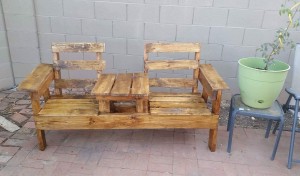 r her. Some of the most interesting projects were not the most beautiful or the most difficult, but ones that took students out of their disciplinary way of learning within engineering or nutritional sciences and allowed them consider their composing process, abilities, and just simply their everyday engagement with things.
r her. Some of the most interesting projects were not the most beautiful or the most difficult, but ones that took students out of their disciplinary way of learning within engineering or nutritional sciences and allowed them consider their composing process, abilities, and just simply their everyday engagement with things.
For their final reflection in the course, I asked students to name and explain a metaphor to describe their making process and a metaphor to describe their writing process. Then they compared the two processes. One student compared their writing process to a marathon, taking careful preparation, and compared their making process to the birthing process of sea turtles: the mother sculpting the sand and laying eggs (as they gather their materials) and then the baby turtles hatch and make their way on an unknown journey to sea (as they begin their making not knowing how the thing will turn out or what difficulties are ahead). Another student said they felt like a merchant navigator during their writing process because they plot out their destinations before setting sail, and they felt like a explorer navigator during their making process because they do not know the destination and set out for the sake of the experience. At this point, I think students could finally see how this advanced composition course addressed composing as a rhetorical process (although always nuanced) regardless of the end product. In their reflection, a student said they felt like they were in the movie Inception throughout the class because we were writing about writings (assigned readings), reflecting on the idea of reflection, and creating a thing while writing, reading, and reflecting about the very thing they were creating. That’s exactly what I was aiming for: metacognition about composition.
One major challenge was working in the ispace—the incredible on-campus maker space. It was difficult to keep the class all together fo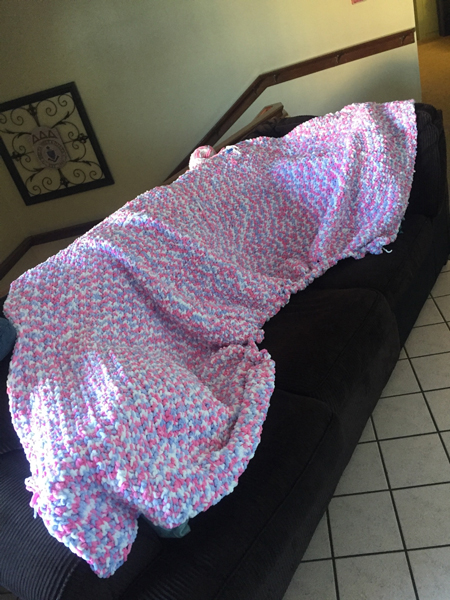 r maker days because some students were working on projects that could not be worked on in class— a large canvas oil painting, a full bed sized crocheted blanket, a wooden bench. The facilitators gave us a tour that showed students all of the interesting possibilities of the ispace. I hoped that we could work there together at tables so that interactions and collaborations could happen while making, but it did not work out that way. I didn’t realize the ispace existed until after the semester had started, so I wasn’t able to integrate working time at the ispace most effectively.
r maker days because some students were working on projects that could not be worked on in class— a large canvas oil painting, a full bed sized crocheted blanket, a wooden bench. The facilitators gave us a tour that showed students all of the interesting possibilities of the ispace. I hoped that we could work there together at tables so that interactions and collaborations could happen while making, but it did not work out that way. I didn’t realize the ispace existed until after the semester had started, so I wasn’t able to integrate working time at the ispace most effectively.
Another challenge that ultimately worked out was assessing this maker project. The main question I get from other instructors is “How do you grade something like this?” First of all, the project was three parts (the object, the presentation, and the reflection) each of which had a rubric. Also, part of the making portion had weekly check-ins that discussed the work on the object that week. However, I tailored a rubric that I use in a technical writing course I teach. It was a great starting point to understand the expectations of quality of work (not in materials) but in effort and time. We talked through the language of the rubrics so that students had a clear understanding of the quality of work I expected.
The success of this course proved many things to me, most importantly, that students are amazing at working through incredible research questions. Students had very critica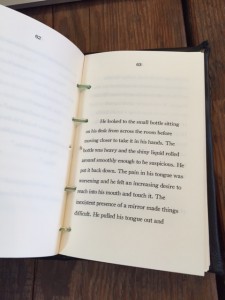 l questions about whether a thing can be rhetorical, what consititutes a thing and an object, how does culture affect the interpretation of an object, how does gender play into our ideas of making? One of the most fruitful conversations that continued throughout the semester is how to define a maker, a hacker, and a crafter. Students even asked me why I decided to name the assignment “maker project.” Their level of inquiry and genuine engagement is one I’ve not experienced with students before. It also proved to me that taking a step back from “composing” in a typical sense (writing) and focusing on composing in a more general sense (making) can facilitate awareness that in the end provides a more nuanced perspective of composing texts. As one student eloquently said, they now understood that things as expressions of the human condition can hold intellectual and emotional impact, just as artwork and writing can. Ultimately, I believe that by engaging with things our class thought more critically about their own writing, with process not product at the center of our experiences.
l questions about whether a thing can be rhetorical, what consititutes a thing and an object, how does culture affect the interpretation of an object, how does gender play into our ideas of making? One of the most fruitful conversations that continued throughout the semester is how to define a maker, a hacker, and a crafter. Students even asked me why I decided to name the assignment “maker project.” Their level of inquiry and genuine engagement is one I’ve not experienced with students before. It also proved to me that taking a step back from “composing” in a typical sense (writing) and focusing on composing in a more general sense (making) can facilitate awareness that in the end provides a more nuanced perspective of composing texts. As one student eloquently said, they now understood that things as expressions of the human condition can hold intellectual and emotional impact, just as artwork and writing can. Ultimately, I believe that by engaging with things our class thought more critically about their own writing, with process not product at the center of our experiences.
[1] I use object and thing interchangeably here not because they are the same, but because scholars use them differently and without consensus about what constitutes each term.
[2] A trace paper traces one term or concept through various texts and authors to understand it more thoroughly—contested or nuanced definitions and uses, development, and salient features of the term or concept.
